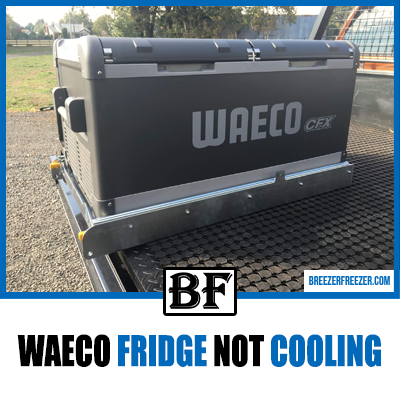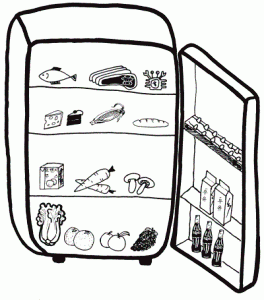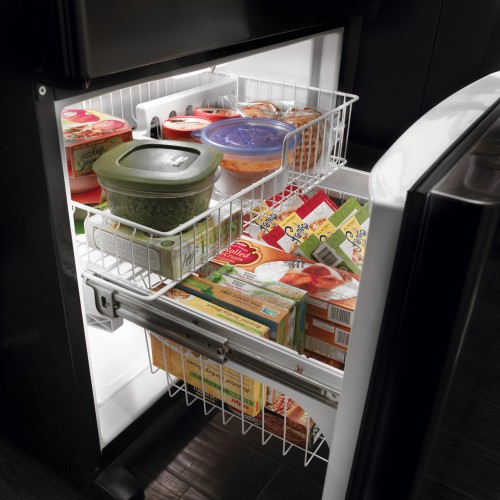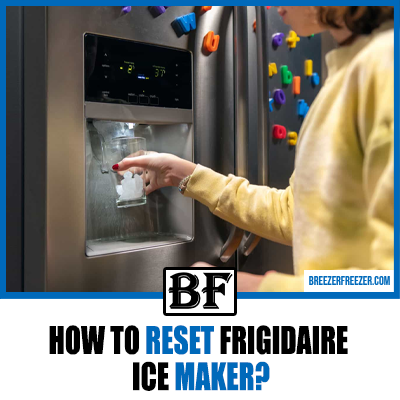Waeco Fridge Not Cooling
Electrical devices are prone to malfunctions, and your “hardy” Waeco fridge is no exception.

Now, we aren’t scaring you, but one of the most common problems that homeowners face with their Waeco fridges is insufficient or “completely stopped” cooling.
That’s why we thought of curating this guide to help our readers understand the reasons behind it and get them prepared for the unfortunate incident.
So, without further ado, let’s begin!
12 Reasons Why Your Waeco Fridge Is Not Cooling And How To Fix Them?

There are no points for guessing that the cooling in Waeco fridges can stop for various reasons. So, we have prepared a list of the most common reasons that may be preventing your fridge from doing its job.
Let’s jump into the troubleshooting.
1. Frozen Condenser Coils
Did you know that the condenser coil of your Waeco fridge takes about 6 months to develop frost or become completely frozen? And once that happens, both the circulating fans and the evaporator coils will get insulated, slowing down the cooling or preventing the process altogether.
Ideally, you should keep a watch on the condenser coils to see if any frost builds on them and clean them from time to time. However, if you suddenly notice a lot of frost accumulation, then remove it right away using a towel or even a leaf blower.
2. Dirty Condenser Coils
As the refrigerant in the condenser coils condenses, the coils emit heat as a byproduct of the process. But the accumulated dirt and debris on the coils hinder the heat distribution, and the heat remains trapped in the fridge. This, in turn, affects the cooling of the unit and increases the fridge’s temperature.
Hence, we’d strongly recommend checking the coils regularly and wiping away any dirt or debris from the get-go. Not only will this help keep the fridge optimally functional, but it will also reduce your overall maintenance efforts.
3. Defective Or Damaged Evaporator Fan
The main function of an evaporator fan is to ensure proper air circulation (cool air) across the different parts. So, if the fan doesn’t work effectively enough or stops working completely, then the cooling will be affected significantly.
The best way to determine if the evaporator is working or not is to conduct a continuity test. And depending on the results, you may have to repair or even replace the part.
4. Malfunctioning Defrost System
In case you didn’t know this, the defrost system (usually located in the Waeco fridge freezer) of most units is a versatile component, essentially acting as both the cooling and defrosting system. This system further comprises two subparts- the defrost heater and defrost timer.
The defrost heater is responsible for melting the frost collected on the condenser coils of your Waeco fridge. Hence, you can imagine the consequences if the heater is damaged or stops working for any other reason.
On the other hand, the defrost timer switches back and forth between the cooling and defrosting, meaning a faulty timer can hinder the cooling process.
It also prevents cold air from circulating by causing the unwanted buildup of frost. And in the worst-case scenario, the cooling and defrosting may stop completely.
Here again, the best way to check the functioning of both the defrost heater and timer is through a continuity test. This will help you understand if these components need some minor servicing or complete replacement.
5. Faulty Or Damaged Compressor
Now, you may not be a refrigerator expert, but you’d surely know that a fridge is only as good as its compressor. So, if you’re faced with a broken down or faulty compressor, then the unit will lose its ability to effectively compress the refrigerant.
In an ideal situation, the refrigerant, in its vaporized form, should flow from the condenser to the evaporator coils to eventually cool down. And the air circulation over these coils is what keeps the fridge cool. Long story short, a failed compressor equals a failed cooling mechanism.
If you have sensed that the compressor isn’t working, then turn off the main power supply and unplug the power cord. Wait for some time, plug in the cord, and switch on the power supply.
In case you don’t hear any sound (like a humming noise) from the compressor after a few seconds, call a professional to get it repaired or replaced.
6. Low Refrigerant Level
The refrigerant is one of the most important components of a fridge. Naturally, a dip in the refrigerant level will become a roadblock for the cooling process and may even cause the unit to shut down completely.
In this regard, check to see if the door seal is working properly. If not, then it can cause the refrigerant to leak. This is the right time to note the refrigerant and see if it’s due for a refill.
7. Faulty Or Damaged Condenser Fan Blades
Like the other parts of Waeco fridges, the condenser fan blades can also encounter the same problem of malfunction. As you may have already guessed by now, the job of these blades is to push out the hot air from the unit.
Without them, the hot air would stay inside the fridge, subsequently increasing its temperature and offering undue resistance to the cooling system.
Although there’s no easy fix for this problem per se, you can gauge the efficiency of the blades and the condenser motor by conducting a continuity test. And if you need to replace them, then don’t delay hiring professionals for the purpose.
8. Malfunctioning Start Relay
The start relay is a small electrical device or component located near the compressor of your Waeco fridge. It makes the compressor start as soon as the power is turned on. This means that a faulty start relay will render the compressor useless, even if the unit has been receiving power continuously for days.
So, it’s a good idea to run a quick continuity test on this part when you’re checking the compressor to detect any potential faults.
9. Ineffective Start Capacitor
The start capacitor works in tandem with the start relay to get the compressor up and running. So, if it has been damaged or burnt out from excessive wear and tear, both the compressor and the cooling process will take a massive hit.
Whether you’re checking the fridge the DIY way or have called the professionals to do it on your behalf, the only method to gauge its utility is by conducting a continuity test. And a faulty start capacitor can only be replaced and not repaired.
10. Faulty Thermistor
For the unversed, the thermistor is the main tool that helps your fridge understand and execute the start and the end of the cooling cycles. Consequently, a faulty thermistor will prevent the fridge from cooling itself or will result in erratic cooling cycles, so replace it immediately in case of any damages.
11. Changes In The Thermostat Setting
Sometimes, the simple reason behind your Waeco fridge not cooling is an increase in the temperature setting or the wrong temperature set on the thermostat. In case this happens, you can set it to the optimum setting by using the display panel on the fridge (connected to its control panel).
12. Changes In Position Of The Fridge
Has the cooling of your fridge slowed down after you have moved it to make enough space for other appliances in the kitchen or the living room?
This may be because you have placed it too close to a heating source, such as a window that receives plenty of natural sunlight or near the oven.
As a rule of thumb, it’s always recommended to position the fridge away from any heat source, as the incoming heat can increase its temperature. The compressor may then work more aggressively to cool it down, and this may cause it to break down way before time.
Final Words

That brings us to the end of today’s guide.
As a piece of parting advice, we’d suggest cleaning your fridge regularly (with a vacuum cleaner or a clean and dry cloth) to get rid of all the dust and debris.
Furthermore, you can deep clean the unit once or twice a month by availing the services of professionals or contacting the manufacturer to know about the process.
However, if you aren’t confident about cleaning it or employing any of the above-mentioned fixes the DIY way, then hire professionals to ensure that the problem is resolved safely and quickly.
See you next time!
![Westinghouse Fridge Not Cooling [Quick Fix]](https://breezerfreezer.com/wp-content/uploads/2022/08/Westinghouse-Fridge-Not-Cooling-Quick-Fix-.png)


